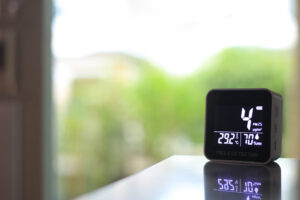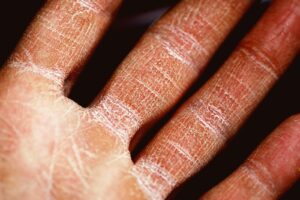Calls for indoor air quality standards to be introduced worldwide
Despite air quality being an issue that is discussed much more widely that it has in the past, an international group of experts are drawing attention to the fact that indoor air quality is still being overlooked.
They are asking that indoor air performance standards, for spaces in which people spend a significant proportion of their time, are developed, legislated and enforced.

In a new paper, Professor Lidia Morawska, Vice-Chancellor Fellow at the University of Surrey, along with a team of over 40 air quality specialists from around the world, has recommended standards for ventilation rate and three key indoor pollutants: carbon dioxide (CO2), carbon monoxide (CO) and PM2.5.
Professor Morawska said: ‘Most countries do not have any legislated indoor air quality performance standards for public spaces that address concentration levels of indoor air pollutants.
‘To have practical value, indoor air quality standards must be implementable by designing new buildings that are built, operated and maintained to standard or retrofitted to meet the standards.
‘While there is a cost in the short term, the social and economic benefits to public health, wellbeing and productivity will likely far outweigh the investment in cost in achieving clean indoor air.’
The paper identifies five challenges that need to be addressed:
Source contributions: Indoor air quality is affected by sources indoors and out. Significantly, indoor air is affected by humans breathing – the cause of most respiratory infections and controlling respiration is not as simple as addressing other sources.
Monitoring: Methods used to measure outdoor air quality – monitoring networks and modeling – cannot be applied to indoor air quality and significantly, there is no way to monitor indoor pathogens in real time.
Legislation: Guidelines and Standards are insufficient unless they are adopted in legislation but even then challenges exist in terms of monitoring and enforcement.
Industry priorities: An example cited here is the heating, ventilation, and air conditioning (HVAC) industry, which focusses primarily on thermal comfort and energy efficiency, which is what the public are demanding. Any legislative changes will likely haver a financial impact on industry, so they will tend to resist it.
The social and political dimension: Introducing standards is complex for a variety of reasons, not least because of issues of local attitudes, custom and the potential cost involved.
Recognising that enforcement of indoor air quality standards in homes is unfeasible, the report suggests that standards be mandatory for public spaces while homes are designed and equipped to meet those standards, with ventilation a key.
Professor Morawska said: ‘The technologies for measuring ventilation already exist in most modern mechanically ventilated buildings but monitoring ventilation rates in terms of clean air delivered to the space requires us to consider the number of people and their activities in the space to ensure adequate IAQ.
‘A practical ventilation standard could be air from outside (assumed to be clean), or clean recirculated air to the entire occupied zone and with airflow not directed from one person to another.
‘Additional measures in support of ventilation, such as air cleaning and disinfection, could greatly reduce the need to increase the outdoor air supply, which carries a heavy energy demand.
‘Filtering recirculated air is an effective way to reduce concentration of, and thus our exposure to, airborne particulate matter, allergens and pathogens.’
Focus should be on pollutants which can be monitored easily and cheaply, specifically PM2.5, CO2 and CO.
Professor Morawska again: ‘CO2 can serve as a proxy for occupant-emitted contaminants and pathogens and to effectively assess ventilation quality,” she said.
‘We propose a CO2 concentration level of 800ppm with the proviso that outdoor concentration is used as a baseline and recognition of the fact that outdoor concentrations are increasing due to emissions to the atmosphere that outweigh removal.
‘Another key indicator of air quality we addressed is the amount of PM2.5 and we propose the WHO air quality guidelines as a basis for indoor air quality standards but with a 1-hour averaging time, as the 24 hours of the WHO AQG is much longer than people usually spend in public places.’
Professor Prashant Kumar, co-author of the paper and Director of the University of Surrey’s Global Centre for Clean Air Research (GCARE), said: ‘There’s no doubt that managing indoor air quality is complicated and modelling is difficult because every space is different. But this can’t be an excuse. We propose solutions using readily available, inexpensive monitors, focusing on three indicator pollutants.’
Professor Catherine Noakes, Professor of Environmental Engineering for Buildings at the University of Leeds, who also contributed, said: ‘CO2 is one of the easiest parameters to measure and can serve as a proxy for occupant-emitted contaminants and pathogens, as well as being useful for effectively assessing ventilation quality.
‘By limiting levels of CO2 indoors, we can reduce the spread of diseases spread by respiratory pathogens, like COVID-19, colds and flu.’














It is as I feared; I have great regard for the authors of this much-anticipated publication but it repeats the problem of AQ standards sending the wrong message. Outdoor AQ standards are too lenient, and send the wrong message about what is really safe air to breathe. I’m deeply disappointed to see the recommended figure for indoor AQ hourly averaged PM2.5 is the 24hr WHO standard of 15ug/m3. This is way too high.
We need to move away from standards and aim for continous reductions in emissions – the message we need to relay for pollutants like PM2.5 is “there is no safe level of exposure”. And for indoor spaces where we can control pollutants with air filtration, we should strive for 0ug/m3.
Over the last 3 months I have repeatedly tried to get a meaningful reaction from Tesco to a serious threat to staff and public health. I have recently sent Tesco HQ the below but have not had a response:
“In December I contacted local managers and your HQ about dangerous levels of PM2.5 in the café at Old Swan, Liverpool. A few weeks ago there was an evacuation of the whole superstore, with a fire engine in attendance. When re-admitted, the café was closed but just outside the café PM2.5 levels were 225ug/m3 – more than 10 times UK government standards. Today the levels are over 300ug/m3 (see attached) which puts café staff at risk of cancer, heart attack & lung disease. Elderly customers are also particularly at risk. Below is the Defra guidance.
https://laqm.defra.gov.uk/faqs/faq141/